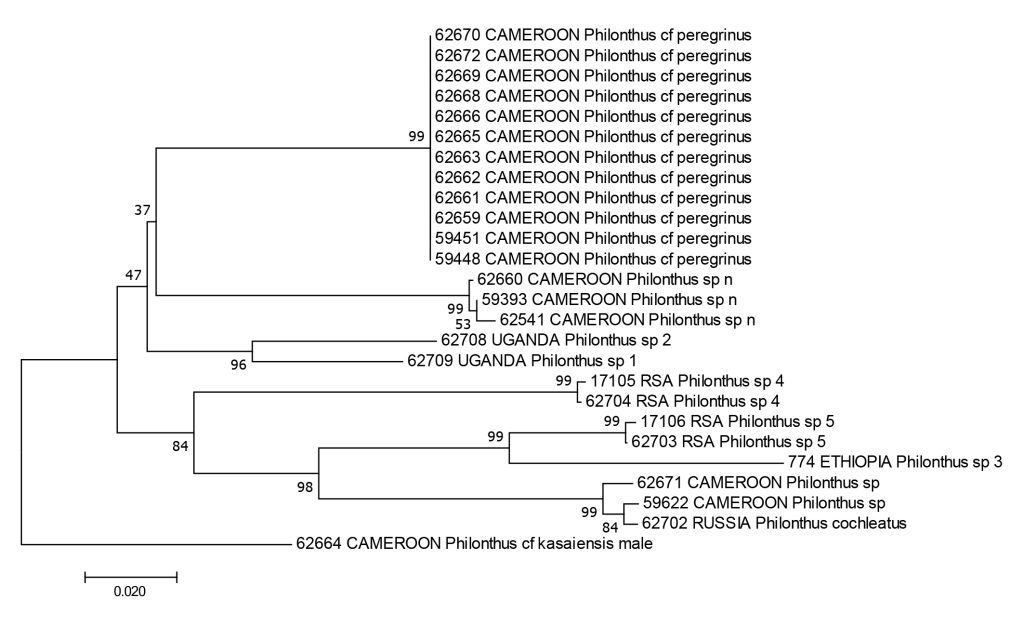Identification of African staphylinid beetles can be challenging. Many genera have never been revised, and descriptions of their species are scattered in different papers, published by different authors at different times, often without illustrations or comparison among related species. Staphylinid beetle genus Philonthus is represented in the Afrotropical region by more than 300 species. Most of these species were recently revised by Lubomír Hromádka in a series of papers published from 2008 to 2013. After a field trip to Cameroon in June 2021 an attempt was made to identify the African species of longicornis group in the collection of the Natural History Museum. Morphology-based identification complimented by comparison of partial CO1 sequences highlighted several problems. The most important morphological characters used for species identification in this group of beetles are characters of the male genitalia (aedeagus). Yet, in the longicornis group the differences between some species are very small. It is not easy to say what exactly the difference is between aedeagi of the three species illustrated in Figs. 39, 42 and 46 below. In our collection, there are two specimens with virtually identical shape of aedeagus, but one of them was collected at elevation of 4000 m in the afroalpine zone of Ethiopia, while the other was collected in Cameroon, in a rainforest at sea level. Can they really belong to one and the same species? Analyses of DNA sequences suggests that there are more (perhaps many more) species in the longicornis group than we currently recognize. Some species may have a geographic distribution that is more limited than current catalogues suggest. Some others may be more widespread than we know and may even be shared with the Palaearctic region (e.g., Philonthus cochleatus). Preliminary results suggest that our understanding of African staphylinid diversity may change substantially, when more species and regions are included in the molecular analyses.


![]()
